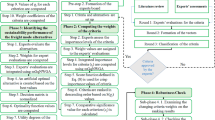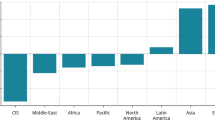Abstract
The widespread investigations on water resources management has become an essential issue because due to lack of sufficient research and inattention to planning and management of conjunctive use of surface and groundwater. The conjunctive management is a suitable alternative for imbalanced water resources distribution and related constraints in using of surface water. In this paper, a multi-objective model is developed to maximize the minimum reliability of system as well as minimize the costs due to water supply, aquifer reclamation and violation of the reservoir capacity in operation and allocation priority. The non-dominated sorting genetic algorithm (NSGA-II) is used to present the optimal trade-off between the objectives. The sequential genetic algorithms is also applied (SGA) in order to be compared with the NSGA-II model. The results show that the NSGA-II model can considerably reduce the computation burden of the conjunctive use models in comparison with the SGA optimization model. The obtained trade-off curve shows that a little increase in reliability leads to much more system costs. The weighted single objective SGA model results verify optimal trade-off obtained from NSGA-II model and show the optimality of allocated discharges.







Similar content being viewed by others
References
Afshar A, Ostadrahimi L, Ardeshir A, Alimohammadi S (2008) Lumped approach to a multi-period—multi-reservoir cyclic storage system optimization. Water Resour Manag 22(12):1741–1760
Azaiez MN (2002) A model for conjunctive use of ground and surface water with opportunity costs. Eur J Oper Res 143(3):611–624
Azaiez MN, Hariga M (2001) Asingle-period model for conjunctive use of groundwater and surface water under severe overdrafts and water deficit. Eur J Oper Res 133(3):653–666
Barlow PM, Ahlfeld DP, Dickerman DC (2003) Conjunctive-management models for sustained yield of stream-aquifer systems. J Water Resour Plan Manag 129(1):35–48
Bazargan-Lari MR, Kerachian R, Mansoori A (2009) A conflict-resolution model for the conjunctive use of surface and groundwater resources that considers water-quality issues: a case study. Environ Manag 43(3):470–482
Buras N (1963) Conjunctive operation of dams and aquifers. J Hydraul Div 89(6):111–132
Chang LC, Chang FJ (2009) Multi-objective evolutionary algorithm for operating parallel reservoir system. J Hydrol 377(1–2):12–20
Coe JJ (1990) Conjunctive use—Advantages, constraints and examples. J Irrig Drain Eng 116(3):427–443
Coello Coello CA, Lamont GB, Van Veldhuizen DA (2007) Evolutionary algorithms for solving multi-objective problems, 2rd Ed. Springer Science
Deb K, Pratap A, Agrawal S, Meyarivan T (2000) A fast elitist non-dominated sorting genetic algorithm for multi-objective: NSGA-II, In: Proceedings of the Parallel Problem Solving from Nature VI Conference, 846–858
Jin X, Zhang J, Gao J, Wu W (2007) Multi-objective optimization of water supply network rehabilitation with non-dominated sorting Genetic Algorithm-II. J Zhejiang Univ (Eng Sci) 9(3):391–400
Karamouz M, Mohammad Rezapour Tabari M, Kerachian R (2007) Application of genetic algorithms and artificial neural networks in conjunctive use of surface and groundwater resources. J Water Int 32(1):163–176
Karamouz M, Zahraie B, Kerachian R, Eslami A (2010) Crop pattern and conjunctive use management: a case study. Irrig Drain 59(2):161–173
Maknoon R, Burges SJ (1978) Conjunctive use of ground and surface water. Am Water Works Assoc 70(8):419–424
Nicklow J, Reed P, Savic D, Dessalegne T, Harrell L, Chan-Hilton A, Karamouz M, Minsker B, Ostfeld A, Singh A, Zechman E (2010) State of the art for genetic algorithms and beyond in water resources planning and management. J Water Resour Plan Manag 136(4):412–432
Ostfeld A, Salomons E (2006) Sensor network design proposal for the battle of the water sensor networks (BWSN), Proc., 8th Annual Int. Symp. on Water Distribution Systems Analysis, ASCE, Reston, Va
Pulido-Velázquez M, Andreu J, Sahuquillo A (2006) Economic optimization of conjunctive use of surface water and groundwater at the basin scale. J Water Resour Plan Manag 132(6):454–467
Rao SVN, Murty Bhallamudi S, Thandaveswara BS, Mishra GC (2004) Conjunctive use of surface and groundwater for coastal and deltaic systems. J Water Resour Plan Manag 130(3):255–267
Srinivas N, Deb K (1994) Muiltiobjective optimization using nondominated sorting in genetic algorithms. Evol Comput 2(3):221–248
Vamvakeridou-Lyroudia LS, Walters GA, Savic DA (2005) Fuzzy multiobjective optimization of water distribution networks. J Water Resour Plan Manag 131(6):467–476
Vedula S, Mujumdar PP, Chandra Sekhar G (2005) Conjunctive use modeling for multicrop irrigation. Agric Water Manag 73(3):193–221
Author information
Authors and Affiliations
Corresponding author
Rights and permissions
About this article
Cite this article
Tabari, M.M.R., Soltani, J. Multi-Objective Optimal Model for Conjunctive Use Management Using SGAs and NSGA-II Models. Water Resour Manage 27, 37–53 (2013). https://doi.org/10.1007/s11269-012-0153-7
Received:
Accepted:
Published:
Issue Date:
DOI: https://doi.org/10.1007/s11269-012-0153-7




